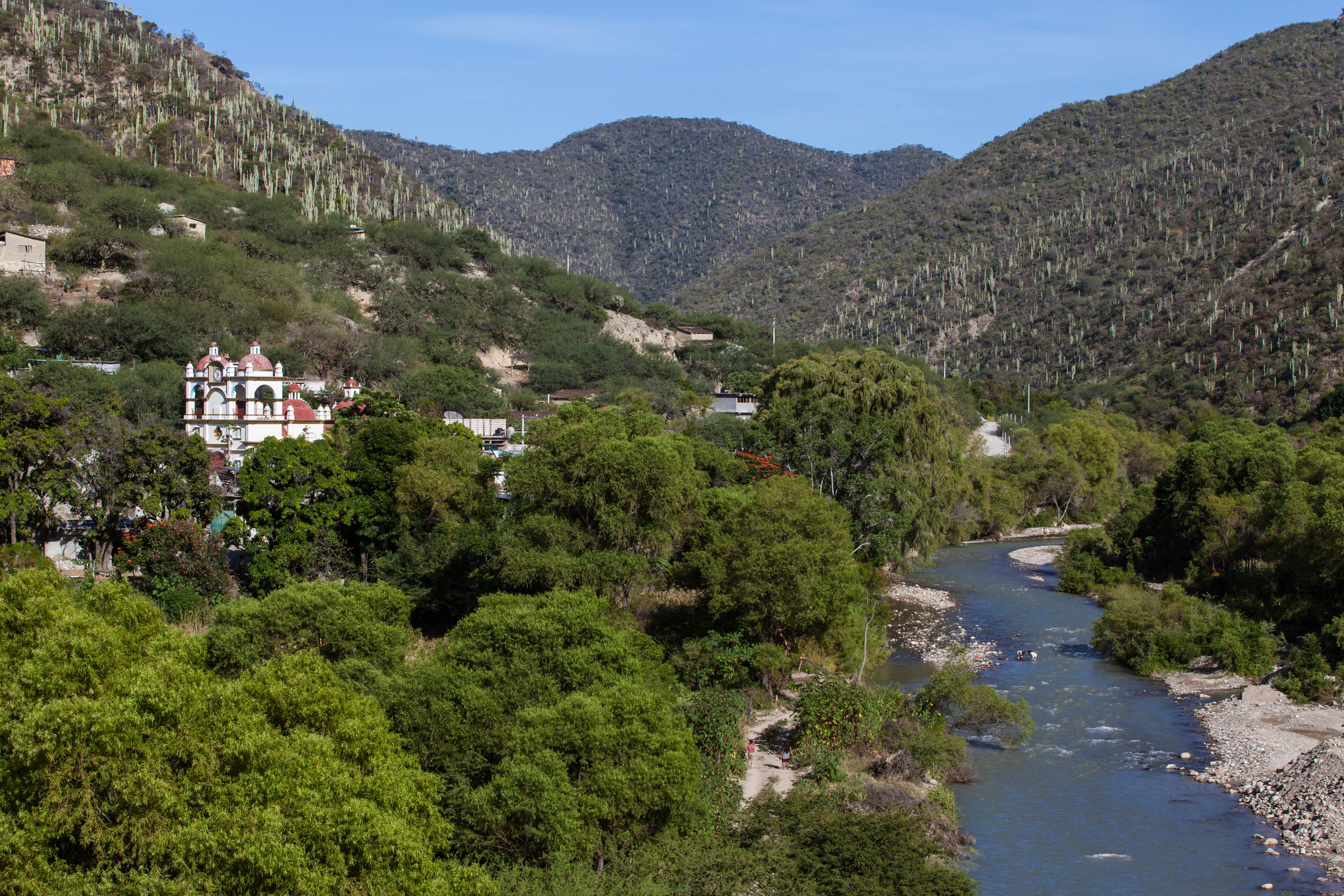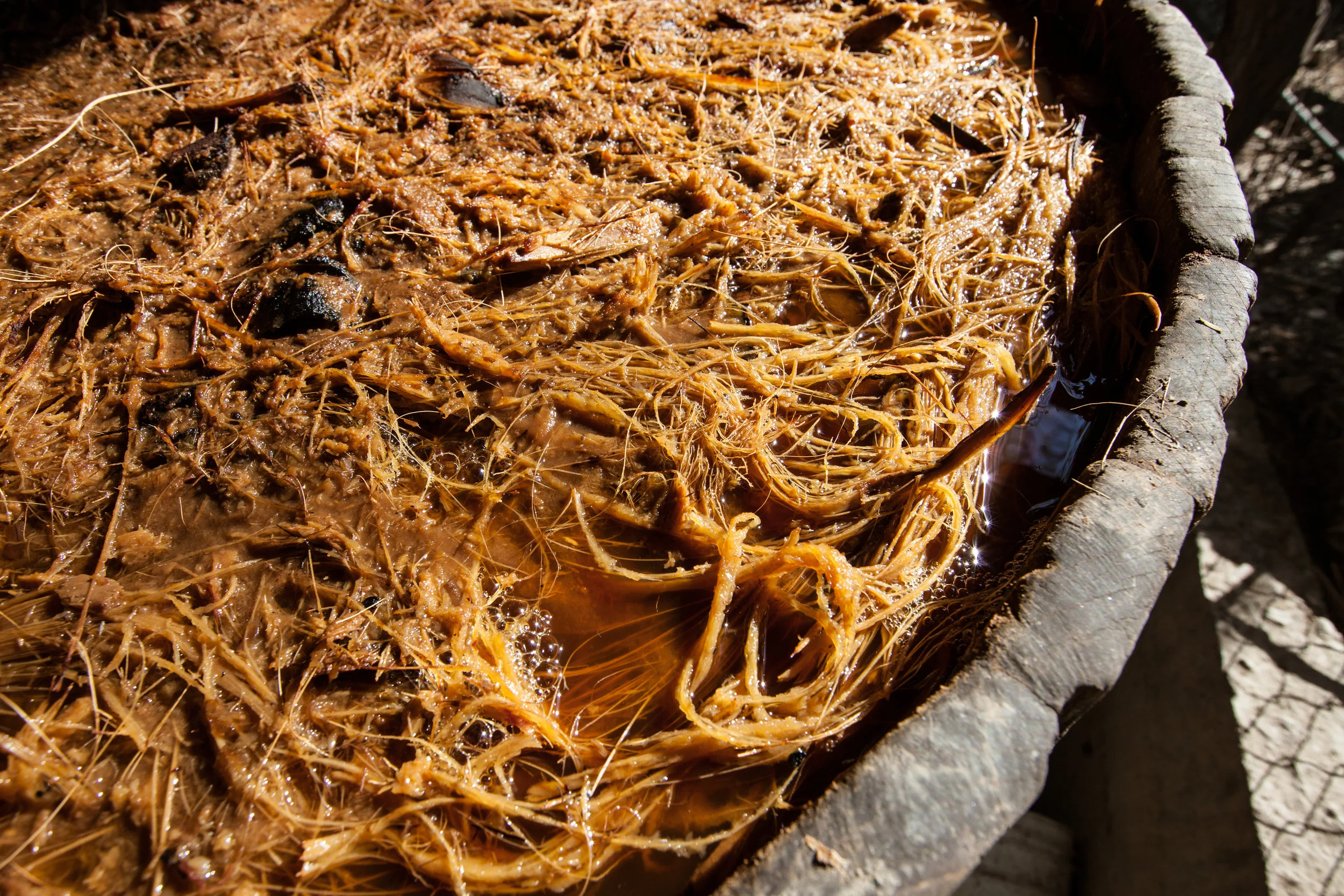Canedlaria Yegolé
Aquilino is the father-in-law of Mezcal Vago’s co-founder, Judah Kuper. This family connection and his exquisite mezcal were the inspiration to form Mezcal Vago. Aquilino had never produced commercially before working with Mezcal Vago and produces exclusively for Mezcal Vago.
Aquilino García López, grows Maguey Espadín, and Maguey Mexicano. He wild harvests Maguey Cuixe (Tobasiche) and Tepeztate. He has taken over fields from his father and also has family and friends with whom he sources agave.
His palenque is in Candelaria Yegolé, Oaxaca (16°29'41.36"N, 96°18'38.69"W) This is a river town in a hot and dry climate at an elevation of around 1100 meters. Two rivers converge in a narrow Valley and it is mountainous on all sides. It is a rugged three-hour drive from Oaxaca city.
The palenque is on Aquilino’s ranch where he lives full time. He and his father moved it to its current location 15 years ago. It has moved around from nearby locations over the years. He believes his family has been making Mezcal for at least five generations. Aquilino does nearly all of the work himself.
The Agave Espadín and Agave Mexicano both take 7 to 9 years to mature and Aquilino is very careful about only using ripe agave. It takes 1000 kilos to yield around 100 liters of Mezcal. So every 10 kilos will yield a liter. The Espadín we cut ranges from 5 to 100 kilos per agave with an average of around 50 kilos for a well-grown ripe piña (agave heart). Therefore, one ripe Agave Espadín yields around seven 750ml bottles of Mezcal. A bit less but similar for Coyote, Arroqueño and Mexicano. Agave Tobalá and Cuixe yield even less.
Batch sizes of Espadín and Elote are around 750 liters. Each batch needs around 7 tons of cleaned and prepared agave piñas. Aquilino limits his batch sizes to one full oven.
Aquilino's Tahona
The Mexicano and the Cuixe are smaller batches due to the availability of the agave. A batch of Mexicano is between 200 and 900 hundred Liters. The Cuixe is between 100 and 300 Liters (he only does around 2 a year.) The Cuixe is very laborious to make. Locating ripe agave growing wild and spread out over a large region surrounding the village takes lots of time and patience. Many of the agave are far from the road and need to be brought down the mountain by burro. The Cuixe is also laborious to clean and prepare and is tough to grind. It is roasted at least a full day longer than Espadín to fully extract the sugars.
Aquilino uses a traditional stone tahona to grind the cooked agave. All of the mashed agave and its juices are scooped together into the fermentation vats. A full oven of agave will take a couple of weeks to grind. This helps space out the fermentation process so not everything finishes at the same time.
The fermentation vats are made of pine and hold up to 1000 liters. The cooked agave and water ferment from the natural airborne yeasts in the air. No additional ingredients are used to make the mezcal other than agave and water.
FERMENTING BEGASO
Each batch ferments for around a week. This varies depending on the ambient temperature at the time of fermentation. Aquilino distills his fermented mash before all of the sugar has fermented. This is sooner than other Mescalero’s’ techniques. He uses six fermentation vats.
Aquilino has a copper still that has a 250-liter capacity. He makes all the separations (cuts) by smell and taste. The heads are between 70% and 30% AVB and his tails are between 30% and 15% AVB. Everything else he doesn’t use.
aquilino's still
Aquilino’s Mezcals has a definite style. Bright, clean and bold without too much smoke. They have less bottom end (tails) than other Mezcal lines, due in part to his “narrow” cuts on the still.
All of Aquilino’s Mezcal goes through a simple triple sediment filtration through tubular cellulose filters. The bottling is done by hand is in Oaxaca City. The light filtration is the only way the Mezcal is affected between when it was made on the palenque and how it ends up in the bottle.





